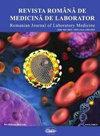Proposal of a prediction model for prognosis of patients with acute myocardial infarction after percutaneous coronary intervention based on galectin-3 and soluble growth stimulating expressed gene 2 levels
IF 0.5
4区 医学
Q4 MEDICINE, RESEARCH & EXPERIMENTAL
引用次数: 0
Abstract
Abstract Background: To study the correlations of serum galectin-3 (Gal-3) and soluble growth stimulating expressed gene 2 (sST2) levels with prognosis of patients with acute myocardial infarction (AMI) after percutaneous coronary intervention (PCI). Methods: A total of 112 patients diagnosed from August 2015 to October 2017 were selected. They were followed up for 3 years. Based on major adverse cardiovascular events (MACEs) during follow-up, they were divided into MACE and non-MACE groups. Multivariate logistic regression analysis was performed to explore the independent risk factors for MACEs. A nomogram model was established using the factors and validated. The optimal cut-off values of Gal-3 and sST2 levels were determined by receiver operating characteristic curves. Kaplan-Meier method was used for survival analysis. Results: MACEs occurred in 78 patients during follow-up. Patients in the MACE group were more often hypertensive, had higher total cholesterol, uric acid, sST2 and Gal-3, and lower left ventricular ejection fraction (LVEF) (P<0.05). CK-MB, sST2, Gal-3 and LVEF were the independent risk factors for MACEs (P<0.05). The nomogram model established with these factors had high accuracy for predicting overall survival, and its concordance index (C-index) was 0.768 (95% confidence interval: 0.692-0.865). The prognosis of the patients with Gal-3 ≥12.57 μg/ mL and sST2 ≥18.56 ng/mL was poorer 3 years after PCI. Conclusions: The levels of serum Gal-3 and sST2 are the independent risk factors for MACEs in AMI patients following PCI, with high prognostic value.基于半凝集素-3和可溶性生长刺激表达基因2水平的急性心肌梗死患者经皮冠状动脉介入治疗后预后预测模型的建立
摘要背景:探讨急性心肌梗死(AMI)患者经皮冠状动脉介入治疗(PCI)后血清半凝集素-3 (Gal-3)和可溶性生长刺激表达基因2 (sST2)水平与预后的关系。方法:选取2015年8月至2017年10月诊断的112例患者。他们被跟踪调查了3年。根据随访期间主要心血管不良事件(MACE)分为MACE组和非MACE组。采用多因素logistic回归分析探讨mace的独立危险因素。利用因子建立了nomogram模型并进行了验证。根据受试者工作特征曲线确定Gal-3和sST2水平的最佳临界值。采用Kaplan-Meier法进行生存分析。结果:78例患者在随访中出现mace。MACE组患者高血压发生率更高,总胆固醇、尿酸、sST2、Gal-3升高,左室射血分数(LVEF)降低(P<0.05)。CK-MB、sST2、Gal-3、LVEF是mace发生的独立危险因素(P<0.05)。用这些因素建立的nomogram模型预测总生存期准确率较高,其一致性指数(C-index)为0.768(95%可信区间:0.692-0.865)。Gal-3≥12.57 μg/ mL、sST2≥18.56 ng/mL的患者PCI术后3年预后较差。结论:血清Gal-3和sST2水平是AMI患者PCI术后mace发生的独立危险因素,具有较高的预后价值。
本文章由计算机程序翻译,如有差异,请以英文原文为准。
求助全文
约1分钟内获得全文
求助全文
来源期刊

Revista Romana De Medicina De Laborator
MEDICINE, RESEARCH & EXPERIMENTAL-
CiteScore
0.31
自引率
20.00%
发文量
43
审稿时长
>12 weeks
期刊介绍:
The aim of the journal is to publish new information that would lead to a better understanding of biological mechanisms of production of human diseases, their prevention and diagnosis as early as possible and to monitor therapy and the development of the health of patients
 求助内容:
求助内容: 应助结果提醒方式:
应助结果提醒方式:


